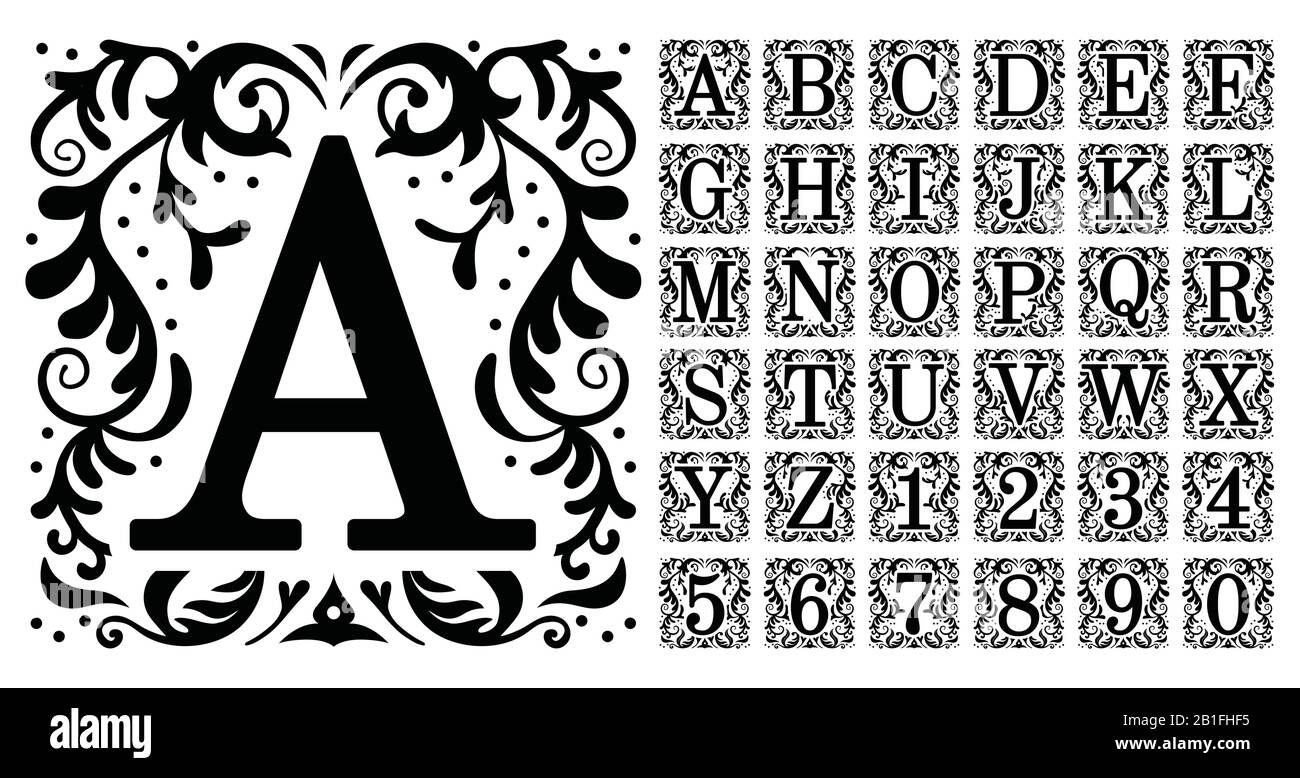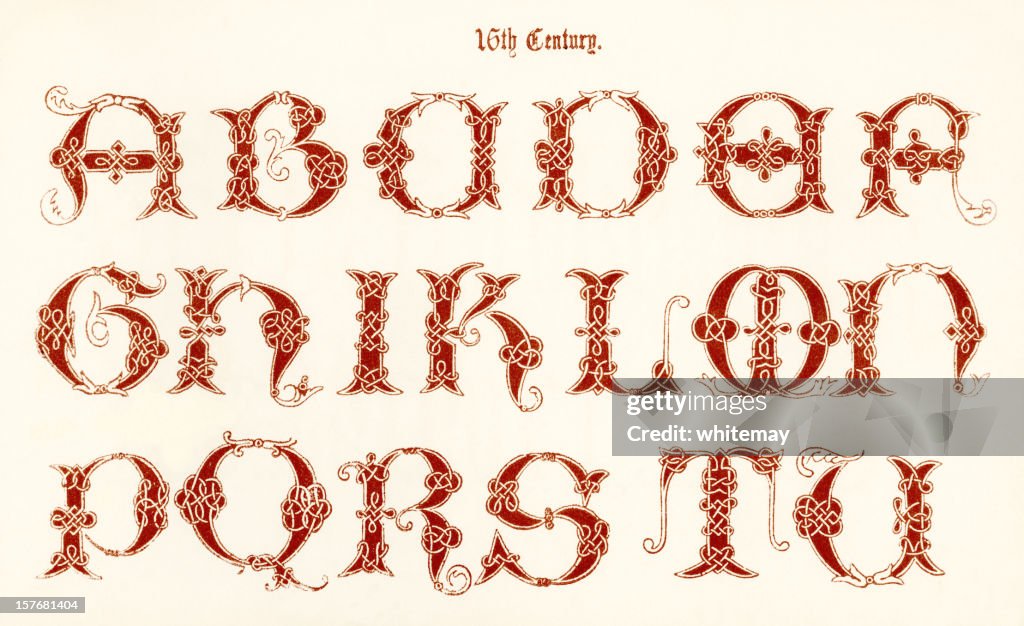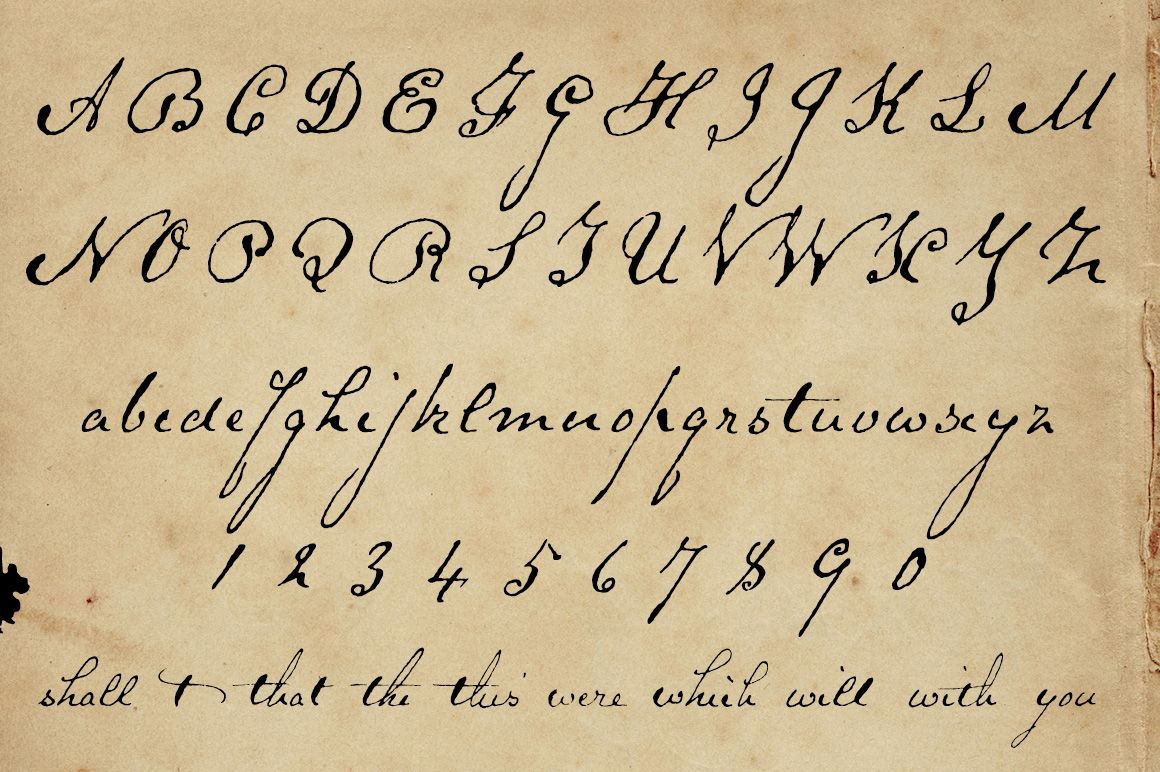
Vintage monogram letters. Decorative ornamental ancient capital letter, old alphabet monograms
English capitalization rules: When to capitalize. Knowing which types of words to capitalize is the most important part of learning English capitalization rules. Basically, there are three types of words you capitalize in English: the pronoun I; the first word in a sentence or line of a letter (e.g., Sincerely) proper nouns

Unknown Two examples of the capital letter I Typeface Engraving 17th Century For Sale at
When Should You Capitalize Historical Time Periods? By Erin Wright Here are three guidelines that will help you determine when to capitalize historical time periods. Capitalization guidelines for historical time periods are influenced by tradition and whether they are named after a proper noun.

14th Century English Capital Letters HighRes Vector Graphic Getty Images
Capitalization or capitalisation in English grammar is the use of a capital letter at the start of a word. English usage varies from capitalization in other languages . History of English capitalization Capitalization in Chaucer's Canterbury Tales (Ellesmere Manuscript, about 1400)

Capital Letters KS3 Essential English Teaching Resources
the eighties the 1980s NOTE: There's no apostrophe between the numerals and the letter s. The same rule about capitalization applies to decades as to centuries: if the decade is part of a proper name or title, it will be capitalized; otherwise leave it in lowercase. For example, write "the nineties," but "the Gay Nineties"

16th Century Italian Capital Letters HighRes Vector Graphic Getty Images
#1 Good day! A quick, small question. Do we ever treat a specific century like a proper noun, i.e. capitalized "C" or is it unnecessary or perhaps are both possible? I suppose the same question could apply to the word "age" such as in "the digital age." "The Digital Age" or written in small letters? Do we say the "Stone Ages?"

Stilrichtung Des 17 Jahrhunderts Stil Alphabet Schriftzug StockIllustration Getty Images
I know that if you are talking about a particular century, like 'the 20th Century', it's a capital letter. If you are referring to 'the present century', is it supposed to be like that or is it supposed to be 'the present Century' or even 'the Present Century'? nouns writing-style capitalization proper-nouns Share Improve this question Follow

Illuminated initial capital letter, 14th Century. ; Verona,... News Photo Getty Images
On 06/03/2020 LEGENDARY TOWER GLENDALE, LLC , A CALIFORNIA LIMITED LIABILITY COMPANY filed a Contract - Insurance lawsuit against CALIFORNIA CAPITAL INSURANCE COMPANY. This case was filed in Los Angeles County Superior Courts, Stanley Mosk Courthouse located in Los Angeles, California. The Judges overseeing this case are ELAINE LU, BARBARA A. MEIERS and BARBARA M. SCHEPER.

Unknown Capital Letter from Ancient Rome Original Etching by Various Masters 1750s For
However, do not capitalize the names of centuries or decades unless they are part of special names: the twentieth century the fifties but. the Roaring Twenties (name of an era) Note that terms referring to events and periods are often capitalized when they refer to specific events or periods and lower cased when used in a general sense:

Unknown Capital Letter A the Antiquities of Herculaneum ExposedEtching 18th Century For
Los Angeles County. In 1958, due to increased consumer demand for individual telephone numbers, the telephone company began phasing out old exchange names for all numeric telephone numbers or "All Number Calling" (pretty much gone by 1963). These old exchange names are remembered in Glenn Miller's song PEnnsylvania 6-5000 and Elizabeth Taylor.

Late 20th Century Capital "U" Channel Letter Channel letters, Lettering, Capitals
majuscule, in calligraphy, capital, uppercase, or large letter in most alphabets, in contrast to the minuscule, lowercase, or small letter.All the letters in a majuscule script are contained between a single pair of (real or theoretical) horizontal lines. The Latin, or Roman, alphabet uses both majuscule and minuscule letters.. The earliest known Roman majuscule, or capital, letters are in the.

Examples Of Medieval Decorative Art Capital Letters Floral Design Elements Stock Illustration
Writing Capitalization Rules for Names of Historical Periods and Movements by Mark Nichol When are designations for historically significant phenomena treated with initial capital letters, and when are the names rendered with lowercase letters? Exceptions, as always, are available to confound us, but the rules are fairly straightforward.

19th century Typography alphabet, Typography, Lettering alphabet
The full rules of capitalization in English are complicated. The rules have also changed over time, generally to capitalize fewer words. The conventions used in an 18th-century document will be unfamiliar to a modern reader; for instance, many common nouns were capitalized.

Cursive Alphabet 1800s
Chris McCormick. On the flight to California, I sat next to a man who introduced himself as the only rabbi in Sioux City, Iowa. When he learned I was off to Glendale to write about the Armenians.

illuminatedcapitalletterantique16thcenturyillustrationillustrationid482599582 (894×1024
In English, a capital letter is used for the first word of a sentence and for all proper nouns (words that name a specific person, place, organization, or thing). In some cases, capitalization is also required for the first word in a quotation and the first word after a colon. Instantly correct all language mistakes in your text

Ornamental Alphabet 16th Century in 2020 Typography alphabet, Lettering alphabet, Old english
Updated on October 12, 2022 Time periods and events are capitalized when they refer to specific periods or use proper nouns in the title, e.g., the Roaring Twenties or the American Civil War.

Font Alphabet Styles Century Gothic
Beginning in 1618, the Thirty Years' War left a scar on the seventeenth century. - Correct. Beginning in 1618, the Thirty Years' War left a scar on the sixteenth century. - Incorrect. To avoid this mistake, keep in mind that the number refers to the end of the century (e.g. 1800 or 1900) and covers the preceding hundred years.